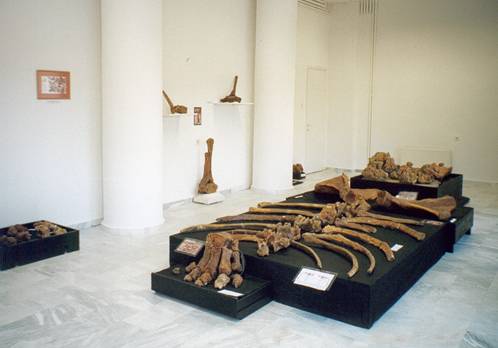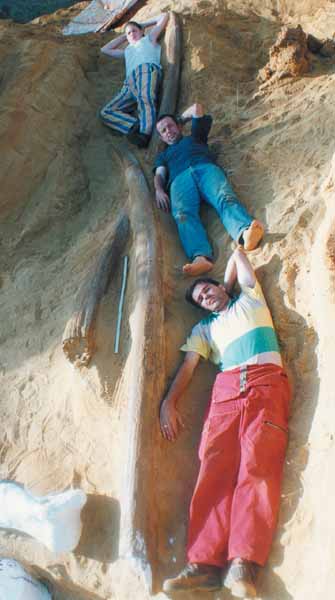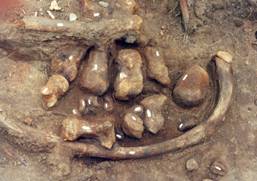The first visit of the trip-field will take place in Grevena town where mainly palaeontological findings of Elephas (palaeoloxodon) antiquus are exhibited.
History: The paleontological research in grevena started in 1990, when a student discovered elephant remains in an old stream, in a building plot close to his house. After preliminary visits for reconnaissance, three substantial field seasons, in 1992, 1994 and 1995 were devoted to excavation of the site. These resulted in abundant fossilized elephant remains, apparently all pertaining to a single skeleton.
A partial skeleton of straight-tusked elephant, Elephas (Palaeoloxodon) antiquus was excavated from Pleistocene deposits. The material was found in unconsolidated sands, close to the surface, so the remains are in a rather poor state of preservation, because of the water, but mainly because of the roots of the plants that penetrated the fossils and resulted in great damage.
Very few, mainly the metapodials, were well preserved.
This skeleton included substantial portions of the skull, mandible, vertebral column, ribs, the two scapulas, fibula, carpals, tarsals, metapodials and phalanges that represent a large, adult male of about 40 years.
Three samples of elephant tooth enamel were ESR-dated, giving an age in the range 160-170 ± 25 Ky. This indicates Greece as a refugee for temperate, woodland-adapted large mammal species at a time when they were largely excluded from northern and central Europe .
|
The second excavated area, in which the mastodont Mammut borsoni ( proboscidea) was discovered, is situated at the outskirts of Milia village, 15 km northeast of Grevena town.
History: Research in the area started in 1996, when the excavating team of Aristotle University of Thessaloniki trying to evaluate some information given by local villagers, discovered a complete right humerus and part of a tusk. One year later, the excavations took place in the area and two complete tusks more of the humerus, and part of skull with two molars in situ were brought to light. In 1998 the excavations were continued with additional very interesting findings, such as the complete mandible, right tibia and left ulna, as well as ribs.
Finally, in 1999, as the excavations in this area have been completed, additional material, such as the right ulna, a thoracic vertebra, as well as ribs were found. The skeleton includes substantial portions of the skull, maxillary area with left and right molar series and with the longest upper tusks ever found in Greece, in Europe and probably in the world ( 4.39m ! ). While in a broader area, fossils including hipparion, bovid (cf. Gazella borbonica), suid, cervid, machairodont (a canine of a cf. h omotherium sp.) and rhino remains were also found.
Finally, in 2000, in site Priporos, between the Milia and Agios Georgios villages, a very well preserved complete mandible and ulna of a rhino ( Dicerorhinus etruscus ) have been found also in Pliocene sand deposits.
|





